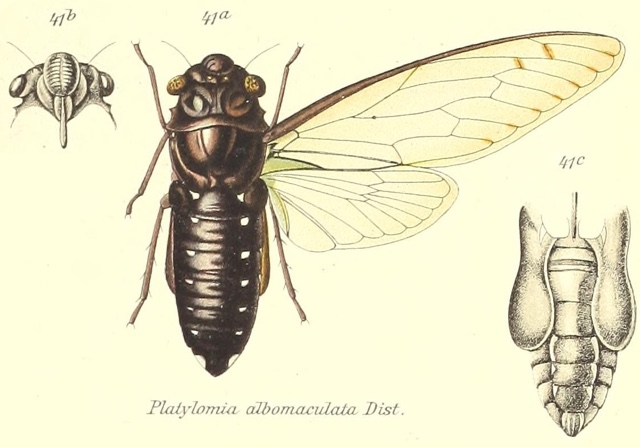Lethama locusta (Walker, 1850) is a cicada found in India.
Scientific classification:
Family: Cicadidae
Subfamily: Cicadinae
Tribe: Dundubiini
SubTribe: Cosmopsaltriaria
Genus: Lethama
Species: Lethama locusta (Walker, 1850)

Lethama genus description by W. L. Distant in Genera Insectorum, 1914:
Characters – lead horizontal, As long as space between eyes, not anteriorly deflected, front very prominent, margins of front and ver/ex obliquely sub-continuous; pronotum as long as mesonotum, its lateral margins oblique, sinuate, obscurely dentate; abdomen considerably longer than space between apex of head and base of cruciform elevation; tympana imperfectly covered, the flaps shorter and narrower than the tympanal cavities; rostrum about reaching the posterior coxae; anterior femora armed beneath with two or three strong spines; opercula extending to more than half the length of the abdomen, sinuate, wide apart and on the lateral abdominal areas; tegmina broad, their greatest breadth more than one-third of their length, apical areas eight, basal cell much longer than broad.
References:
- The illustration and description comes from the journal Genera Insectorum, and a specific article from 1914 by W. L. Distant titled Homoptera. Fam. Cicadidae, Subfam, Gaeaninae. Read it on the Biodiversity Heritage Library website.
- Species name verification comes from Allen Sanborn’s Catalogue of the Cicadoidea (Hemiptera: Auchenorrhyncha).








